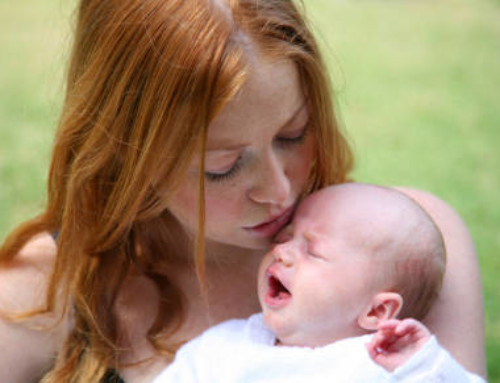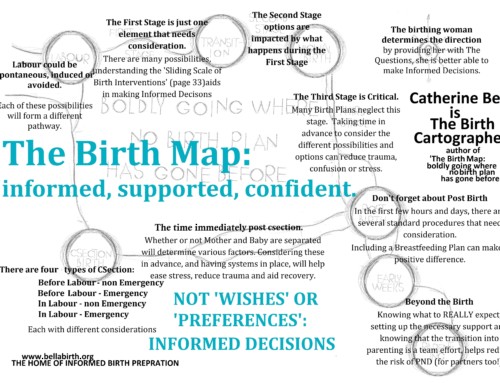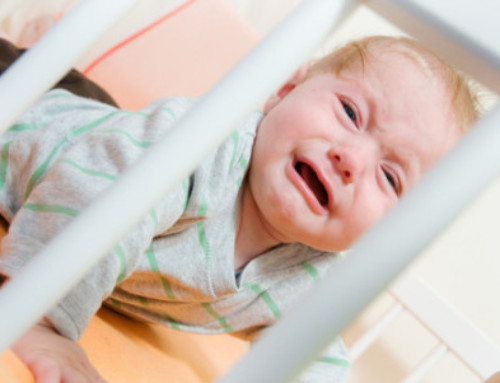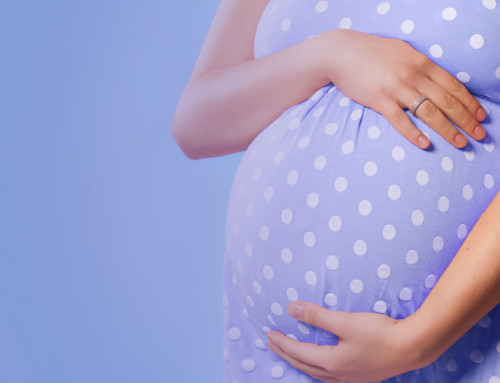By Celeste Gilman
Before my daughter was born, my husband made a comment about it not being necessary to put babies in diapers. I didn’t put too much stock in it at the time, but the idea was intriguing and after a while we started looking into it more. We discovered there was an approach to infant elimination called elimination communication. There are some books on the topic (one of which I skimmed) and some information online. Most helpful for us, I was fortunate to take a class on the topic put on by a local organization called Birth and Beyond.
The basic premise is that children instinctively don’t want to wet or soil themselves. They tend not to eliminate in their sleep and they prefer not to eliminate on a caregiver. This means there are semi predictable points in the day when elimination (pee or poop) occur, including just after waking. If a child is being held (in arms or in a carrier) he or she will tend to get restless when he or she needs to eliminate (their way of saying, please help me not eliminate on you). Many parents notice that their children make certain faces, sounds, and or body movements that accompany the need to eliminate. Elimination communication is about being attuned to those signals and then giving the child an alternative to eliminating in diapers.
Our daughter was a constant pooper when she was a newborn. We found a professional diaper service to be a great value for our family in those first months when everything was new and it seemed like our daughter was pooping and peeing constantly. Some families practice elimination communication from the very beginning. For our family it was too much to take on, although we tried to be very attentive to our daughter’s elimination and quickly change her diaper whenever she went.
Around two months I took a class on elimination communication and we bought an infant potty. We started by making a nest of cloth diapers and laying our daughter on that bare bottomed. We watched her body language to understand the signs she would make when she needed to eliminate. When she went pee we made a sound for pee and when she went poop we made a sound for poop. We continued to practice this for a while until we had a good sense of her signs and she began to understand our queuing sounds. The queuing sounds are not Pavlovian training, they are an invitation and a request. The child signs that they want to go and then trusts that the parent will quickly, responsively let them know when it is okay to go.
Once we had the basics of communication down, we practiced for a while just with an open diaper. Our daughter would sign she needed to go and we would open her diaper and make the queuing sounds (even though we had different sounds for pee and poop, we usually just used both to tell her to do whatever she needed to do). She would wait until we’d made the sounds and then we could change the diaper right away – no more sitting in wet or dirty diapers!
Around 3 months old when she could hold her head up more reliably we began setting her on top of the infant potty and making the queuing sounds when she made signs that she needed to go. To our delight and the wonder of the grandparents, she went in the potty!
Some days we caught her need to pee or poop almost every time. Some days had more misses than catches. Some families practice elimination communication without the use of diapers. For us, we found it a good responsive but low stress option to combine using the potty and wearing diapers. At seven months we went in for an appointment to check our daughter’s hip development (she was breech and diagnosed with hip dysplasia at birth) and found out that her earlier treatment hadn’t held and she needed to go into a spica cast for three months (a cast from her armpits to her ankles). Being dry became suddenly imperative (there are no baths for the three months of treatment). We cancelled the cloth diaper service and got the most absorbent brand of disposals we could find. At the same time we kept using the potty as much as we could. When the cast came off the doctors were amazed – they’d never seen a cast that looked and smelled as good (as in not bad) as our daughter’s. Through all the hassle of the cast we were so grateful that our daughter was using the potty.
At ten months our daughter got out of the spica cast and started working hard to catch up on mobility. We started using a mix of cloth diapers and disposables. We used and liked the g-diaper brand. Cloth diapers help the child with elimination self awareness because they can feel the wetness. We liked generating less trash, and since we were generally successful catching poops, when our daughter’s diaper needed changed (and washed) it was generally just wet. Disposables continued to be convenient when out and about and at night.
Potty use was hit or miss during this time, especially around 15 to 17 months when she was really focused on learning to walk. She was more clearly getting her own ideas of what to do and sometimes using the potty was not among her priorities. This was the most frustrating time in the process for me. I had been expecting that once she gained mobility she would quickly move to using the potty all the time, because she could simply take herself to the potty when she needed to go. Instead we had far more misses and more than once a very frustrated baby and mama.
I had to take a step back and remind myself that even though my daughter was still in diapers after over a year of using the potty, she wouldn’t be in diapers forever. Sure enough, she got the walking under control and she started to use the potty more willingly again. We also phased out the cloth diapers as our daughter became more stable on her feet and they seemed to be more of a bulky impediment to walking and less useful padding for tumbles. At 19 months she started at a new childcare center. It is Montessori based with a strong emphasis on developing life skills. They have a child toilet in the classroom and the children us it as part of the diaper routine. After a few weeks of settling in, it was apparent to all of her caregivers that our daughter had stopped using her diapers. I started to feel like a laggard. I was still nervous about accidents, especially during our hour long train and bus commute to school and work. It didn’t take us too long to catch up though. We made a weekend shopping trip to buy training panties. Our daughter is petite and the baby industry is geared towards late potty training, so the smallest size was still pretty big on her little bum, but it works. We finally took the plunge and went diaper free. Her teachers at school have been amazed. She’s the only child they’ve had who has never had an accident at school. She has accidents at home from time to time, but they are few and far between. Now at almost 23 months she only wears a diaper at night. We co-sleep and she still nurses several times a night. Despite that input of liquids in, her diaper is still dry in the morning more often than not. We shall see, but I have a feeling that as soon as she is night weaned we will transition out of using diapers at night as easily as we transitioned out of using diapers during the day.
We have greatly valued the whole experience of elimination communication. It has given us a strong opportunity to practice partnership with our daughter from a very early age, responding to her communication and giving her the support and tools to take action. Babies communicate from day one. I’ve heard the view on breastfeeding that “a child who can ask for it is too old.” I realized how ridiculous this idea was as soon as I had a baby of my own who clearly asked for milk from the day she was born. The newest humans are tremendous communicators if we just listen to them with respect and love. Every child is different. Some would be out of diapers far earlier than my daughter and some far later if given the opportunity. I feel so grateful that we were given enough knowledge and nudge to learn how to communicate about elimination with our daughter. I feel it has been very beneficial for her, good for our relationship, and I certainly don’t mind not having to buy and deal with all those diapers!
Celeste Gilman lives with her daughter and husband in Seattle, WA. She was born at home and has been fascinated by natural pregnancy, birth, and parenting for as long as she can remember. She greatly enjoys getting to be a participant and not just an armchair admirer of the parenting adventure – unexpected challenges, moments of grace, and all.






I would love to hear a rough estimate for how often she was being taken to the potty through each stage of infancy. We did EC with my son until he was about 4-5mo and we were more hit than miss up to that point. But then he would literally be peeing every 10 minutes and it wasn’t a little bit of pee. It was a LOT of pee; enough that I wouldn’t expect him to hold it in any longer. And it only got worse over the next few months after that because he didn’t start taking solids until he was 11 months, so every bit of his intake was in liquid form. I didn’t know anyone doing EC, so I just assumed that he was an above average urinator and that EC was impractical for us. But I’d love to know whether that was just something we could have worked through so that I can implement it with the rest of our children when we have them.
In the early months our daughter would pee as frequently as every 20-30 min. It did mean a lot of running around to the potty. However, she wore diapers this whole time too. We never looked at it as an all or nothing thing. Any catch was a “win.” Whether it was in the earliest months in diaper service cloth diapers or later when she was in her spica cast, we were motivated to change her out of wet diapers as soon as possible. Having that commitment, it wasn’t much more to take her potty each time. We did learn to buy a bunch of potties so we never had to go far to get to one.
Now at almost two years old my daughter has amazing bladder control. She sometimes won’t pee for four hours or more. Sometimes she can hold it longer than I can. She still wears a diaper at night but there will be nights where she’s nursed a lot at night (liquid in) and not only is she dry in the morning, she’s still dry an hour later after I whisk her out of bed to get to daycare because I’m running late.
I’m glad we didn’t try to take on elimination communication when our daughter was a newborn and peeing and pooping constantly. It does sound like your son was an above average urinator. Even with a longer interval, it was a commitment and investment up front, but I feel it’s paid huge returns in the long run. “Potty training” (taking the final step to being diaper free) was effortless and completely child-led. I have a two year old and I think it has been about a year since I changed a poopy diaper. For our family it has been a win-win-win: good for baby, good for parents, good for pocketbook (also popular with other caregivers once they got up the learning curve.
Thanks so much for responding! I know what you mean about it being a commitment to change diapers immediately, as we still do this now at a year and I’m still catching all his poos in the potty (and a couple in the bathtub on accident, lol, but thankfully that was before he started actually swallowing his solids). He’s learned walking recently, so signalling for pees is still a no go, but I think I’m going to start signalling for pees again and see if he picks it up once he’s mastered walking. Hopefully he’ll be signalling regularly by next year when #2 comes along and I can focus more on helping that LO maintain their instinct not to soil on their caregiver, but if not at least we had an adventure trying! Thanks again!
Hi, Could you please explain if you made the baby use the potty at night?. We have been practising elimination communication from 3 months but my 9 month old baby has been consistently refusing using the potty for about a month now. She also never isseded to pee at night earlier except when she woke up to breastfeed but for the past month she has been peeing a lot during sleep also. We never used disposable diapers for her even at night till 8 months but now considering using doapers during the night. Any insight would be appreciated